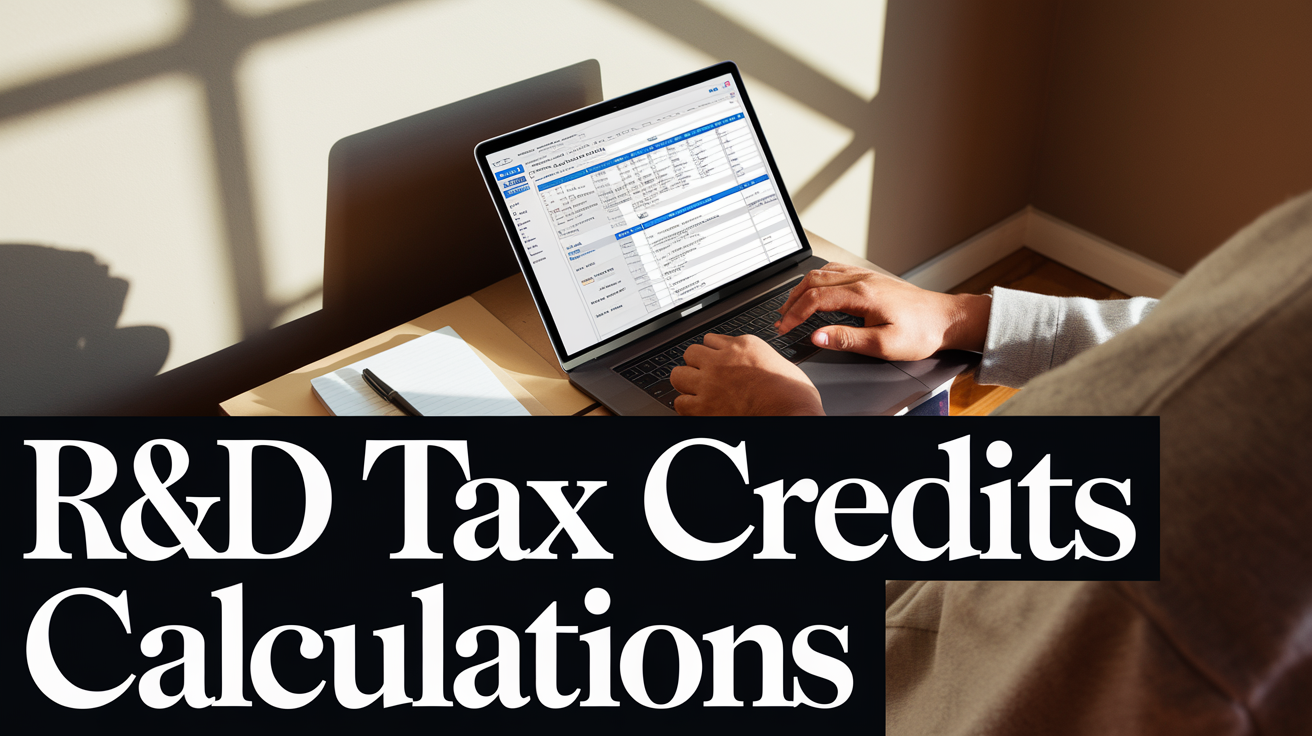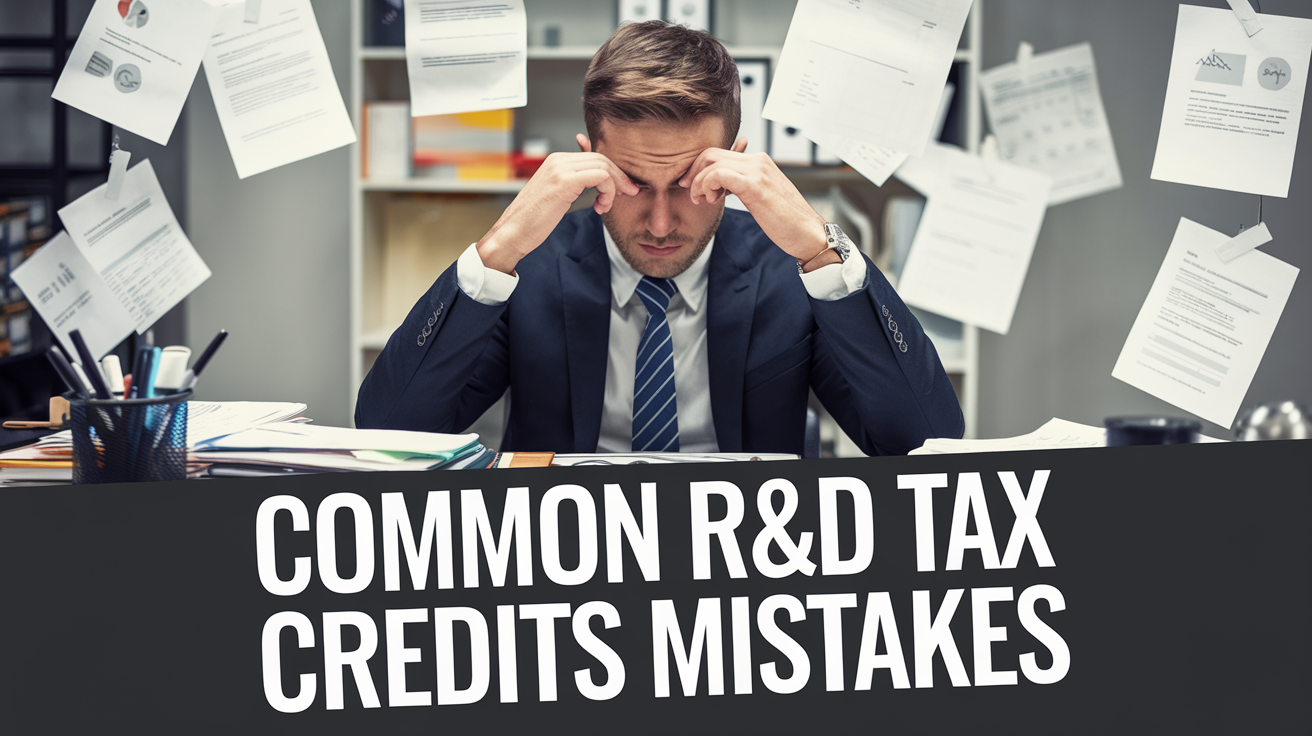R&D Tax Credits Havering Greater London
R&D tax credits in Havering, Greater London, are invaluable incentives provided by the UK government to encourage innovation and technological advancement. These credits allow businesses to claim tax relief on their research and development expenditures, which can significantly reduce their tax liability or provide a cash payment, even for projects that do not yield immediate financial returns.
For businesses in Havering, claiming R&D tax credits can be a crucial financial boost. Companies can claim relief under either the Small and Medium-sized Enterprise (SME) scheme or the Research and Development Expenditure Credit (RDEC) scheme, depending on their size and the nature of their projects. The SME scheme offers a higher rate of relief, allowing companies to claim up to 33% of their qualifying R&D expenditure until March 31, 2023, and up to 27% for R&D intensive companies thereafter.
By leveraging R&D tax credits, Havering businesses can reinvest the saved funds into further innovation, hiring new staff, and supporting overall growth. This not only enhances their competitive edge but also fosters a culture of innovation, driving advancements in various sectors such as technology, manufacturing, and life sciences. R&D Tax Credits UK can guide you through the process, ensuring you maximize your claim and comply with all HMRC regulations.

How Do R&D Tax Credits Benefit Havering Businesses?
R&D tax credits can significantly benefit Havering businesses by reducing their tax liability and fostering innovation. These credits allow businesses to offset the costs associated with research and development activities, thereby freeing up more resources for further innovation and growth.
Financial Advantages
R&D tax credits offer substantial financial benefits to Havering businesses. By claiming these credits, businesses can deduct up to 230% of eligible R&D expenses from their taxable profits, leading to a significant reduction in their tax liability.
For loss-making companies, R&D tax credits can be converted into a tax credit, calculated at 14.5% of the eligible R&D claim, providing a valuable cash injection.
Competitive Edge in Innovation
R&D tax credits give Havering businesses a competitive edge in innovation by incentivizing them to invest in research and development. These credits encourage businesses to undertake projects that seek technological, scientific, or industrial advancements, even if there is uncertainty about the project's success.
By supporting such activities, R&D tax credits help businesses stay ahead in their respective fields, develop new products and processes, and improve existing ones, thereby enhancing their overall competitiveness.

Which Industries Commonly Claim R&D Tax Credits?
Various industries in the UK frequently claim R&D tax credits, as these incentives support businesses that invest in innovation and development. These industries include those involved in technology, manufacturing, life sciences, and several others.
Technology Sector
The technology sector is a significant beneficiary of R&D tax credits. Companies in this sector, such as those in IT and software development, often engage in projects that aim to advance science or technology, making them eligible for tax relief. For example, businesses developing new software, improving existing algorithms, or creating innovative digital products can claim R&D tax credits for their qualifying expenditure.
Manufacturing
Manufacturing companies also commonly claim R&D tax credits. These businesses often invest in research and development to improve their products, processes, or services. This can include developing new materials, enhancing production techniques, or designing more efficient manufacturing systems. Such activities are typically eligible for R&D tax relief, helping these companies reduce their tax liability or receive cash credits.
Life Sciences
The life sciences sector is another major recipient of R&D tax credits. Companies involved in medical research, pharmaceutical development, and biotechnology frequently undertake projects that qualify for tax relief. This includes research into new treatments, development of medical devices, and advancements in genetic engineering. These activities are crucial for innovation in the life sciences and are supported through the R&D tax credit scheme.
Others
Besides the technology, manufacturing, and life sciences sectors, other industries also benefit from R&D tax credits. These include companies in the professional, scientific, and technical sectors, as well as those in cosmetics, farming/agriculture, and food and drink. Any business that seeks to achieve an advance in science or technology through a project can potentially claim R&D tax credits, regardless of the sector they operate in.

What Qualifies as R&D Under UK Tax Law?
To qualify as Research and Development (R&D) under UK tax law, your project must seek an advance in science or technology by overcoming scientific or technological uncertainties. This advance must benefit the field overall, not just your business.
Qualifying Activities
Qualifying R&D activities include projects that aim to resolve scientific or technological uncertainties that are not readily deducible by a competent professional in the field. These can involve developing new products, services, or processes, or improving existing ones. The work must be part of a specific project to make an advance in science or technology and must relate to your company’s trade, either an existing one or one you intend to start based on the R&D results.
- Staff Costs: Salaries, wages, pensions, and National Insurance contributions for staff working directly on R&D projects are eligible.
- Subcontractor Costs: Costs incurred from subcontracting R&D work to charities, higher education institutions, scientific research bodies, health service bodies, or individuals.
- Consumables: Materials and utilities consumed as part of the R&D project.
- Information Management Systems: Developing systems to provide a faster and more efficient workflow internally, as long as it contributes to overcoming scientific or technological uncertainties.
Excluded Activities
Activities that do not qualify for R&D tax relief include those that do not involve overcoming scientific or technological uncertainties. Here are some examples:
- Routine Work: Activities that are routine or do not involve any technical uncertainty, such as routine software development or quality control.
- Arts, Humanities, and Social Sciences: Work in these fields does not qualify for R&D tax relief.
- Commercial Innovation Without Scientific Advance: Projects that are commercially innovative but do not incorporate any advance in science or technology are not eligible.
- Non-Scientific Uncertainties: Work aimed at overcoming non-scientific or technological uncertainties, such as market or financial uncertainties, does not qualify.

How Are R&D Tax Credits Calculated?
R&D tax credits are calculated by determining your qualified research expenses (QREs) and applying the appropriate credit rate. You can use either the regular research credit (RRC) method or the alternative simplified credit (ASC) method to calculate these credits.
SME Scheme
Note: The SME Scheme is not a term typically used in the context of R&D tax credits in the UK or US. However, for UK businesses, the equivalent would be the SME R&D relief scheme.
For UK businesses, the SME R&D relief scheme allows companies to claim a higher rate of relief on their R&D expenditures. This scheme is not directly comparable to the US R&D tax credit methods but involves similar principles of identifying and calculating QREs.
- Qualifying Expenditures: Include wages for R&D employees, third-party costs, and supplies required for the research and development of new products and technologies.
- Calculation: The SME R&D relief scheme provides a tax relief of 230% of the qualifying R&D expenditure, which can be claimed as an enhanced deduction against profits or, in some cases, as a payable tax credit.
RDEC Scheme
Note: The RDEC (Research and Development Expenditure Credit) scheme is relevant for larger companies or those that do not qualify for the SME scheme.
The RDEC scheme is designed for larger companies or those that cannot claim under the SME R&D relief scheme.
- Qualifying Expenditures: Similar to the SME scheme, these include wages for R&D employees, third-party costs, and necessary supplies.
- Calculation: Under the RDEC scheme, companies can claim a taxable credit of 20% of their qualifying R&D expenditure. This credit can be used to offset corporation tax liabilities or, in some cases, be claimed as a cash payment if the company is not in profit.

What Are the Recent Changes to UK R&D Tax Credits?
The UK government has introduced significant changes to the R&D tax credit system, aiming to simplify the process, reduce fraud, and better support innovation. These changes include the merger of the SME R&D Tax Relief and the Research and Development Expenditure Credit (RDEC) schemes into a single RDEC-like scheme.
Policy Updates
- RDEC Rate Increase: The RDEC rate has increased from 13% to 20% for expenditure starting on or after 1 April 2023.
- SME R&D Tax Relief Changes: For expenditure starting on or after 1 April 2023, the SME additional deduction decreased from 130% to 86%, and the SME credit rate reduced from 14.5% to 10%.
- Merged Scheme: From 1 April 2024, a new single RDEC-like R&D Tax Relief scheme will apply to all companies, including both SMEs and large organisations.
- Enhanced R&D Intensive Scheme (ERIS): Introduced for loss-making SMEs with high R&D expenditure, offering up to 27% benefit for qualifying expenses.
- Digital Submission and Additional Information: All R&D claims must be submitted online, and must include a breakdown of the types of R&D expenditure and be supported by a named officer of the company.
- Subcontracting and Overseas Costs: Rules regarding subcontracted R&D and overseas costs have been updated, with overseas costs generally no longer eligible unless it is wholly unreasonable to replicate the conditions in the UK.
Impact on Businesses
- Simplified Process: The merger of the schemes aims to simplify the R&D tax relief landscape, making it easier for businesses to claim relief.
- Increased Scrutiny: Businesses will face higher levels of scrutiny, with HMRC conducting more thorough risk assessments and requiring additional information to support claims.
- Financial Impact: The changes result in a post-tax benefit of between 15% and 16.2% of qualifying R&D expenditure under the new RDEC scheme, depending on the corporation tax rate.
- R&D Intensive SMEs: Loss-making SMEs with high R&D expenditure can benefit from the ERIS scheme, which offers a higher rate of relief.
- Compliance: Businesses must ensure strict compliance with the new rules to avoid penalties, making professional advice advisable for navigating the changes.

How Can Havering Businesses Apply for R&D Tax Credits?
To apply for R&D tax credits, Havering businesses need to identify and document their qualifying research and development activities and submit the necessary forms to HMRC. This process can be streamlined by seeking guidance from tax experts.
Application Process
- Identify Qualifying Activities: Determine which of your business activities meet the HMRC's criteria for R&D tax credits. This includes developing new or improved products, processes, software, or techniques, and activities that involve technological uncertainty and experimentation.
- Gather Financial Records: Collect all relevant financial records, including payroll records, expenses for supplies and equipment, and contracts with third-party partners involved in R&D.
- Complete the Necessary Forms: Fill out the appropriate forms, such as those required for the Research and Development Expenditure Credit (RDEC) or the Small or Medium-sized Enterprise (SME) scheme. For UK businesses, this typically involves using the Corporation Tax return (CT600) and the relevant supplementary pages.
- Submit Your Claim: Submit your claim along with your Corporation Tax return. Ensure all documentation is thorough and supports your claim, as HMRC may request additional information.
Required Documentation
- Payroll Records: Keep detailed records of salaries and wages paid to employees involved in R&D activities.
- Expense Records: Document all expenses related to R&D, including receipts, invoices, and accounts for supplies and equipment.
- Contracts and Invoices: Maintain records of contracts and invoices paid to third-party partners involved in R&D activities.
- Technical Documentation: Include blueprints, patents, designs, drawings, and prototypes related to your research. Also, keep project and meeting notes that detail the research process.
- Business Records: Ensure that your business records clearly demonstrate how your activities meet the HMRC's four-part test for R&D tax credits: permitted purpose, technological in nature, elimination of uncertainty, and process of experimentation.

What Common Mistakes Should Be Avoided When Claiming?
When claiming expenses or deductions on your tax return, it is crucial to avoid common mistakes that can lead to penalties, audits, and unnecessary stress. Here are some key areas to focus on to ensure accuracy and compliance with HMRC regulations.
Overclaiming
Overclaiming expenses or deductions can trigger HMRC scrutiny and result in penalties. This often occurs when taxpayers claim excessive or inappropriate expenses, such as personal costs as business expenses. To avoid this, familiarize yourself with HMRC guidelines on deductible expenses and keep organized records and receipts for all claimed expenses, ensuring they are directly related to your business activities.
Underclaiming
Underclaiming legitimate expenses can result in a higher tax liability than necessary. This mistake happens when taxpayers fail to claim all available deductions and credits, such as expenses for office supplies, travel, and equipment. Ensure you understand all the deductions and credits available and maintain accurate records to support your claims.
Documentation Errors
Documentation errors can lead to significant issues, including delayed or rejected claims. This includes missing or incorrect Unique Taxpayer Reference (UTR) or National Insurance (NI) numbers, as well as failing to produce necessary invoices or receipts. Always double-check your documentation and ensure you have all required paperwork in order before submitting your tax return.

How Can Professional Advice Enhance R&D Tax Credits Claims?
Professional advice can significantly boost your R&D tax credits claims by ensuring you meet all the eligibility criteria and maximize your claim amount. Experts in R&D tax credits can guide you through the complex process, helping you avoid common pitfalls and optimize your returns.
Role of Tax Credit Specialists
Tax credit specialists play a crucial role in the R&D tax credits claim process. Here are some key aspects of their role:
- Expertise in Eligibility Criteria: They help determine if your projects qualify for R&D tax relief, ensuring that your activities meet the HMRC's criteria for innovation and technological advancement.
- Claim Preparation: Specialists manage the entire claim process, from preparing detailed reports to filing the claim with HMRC. This includes gathering and documenting qualifying expenditure such as staff costs, materials, software, and subcontractor fees.
- Process Optimization: They design and improve your R&D claim processes, ensuring efficiency and compliance. This involves automating data flows, consolidating cost and project information, and developing robust claim methodologies.
- Compliance and Defence: Experts ensure your claims are compliant with HMRC regulations and can assist in responding to HMRC enquiries, providing confidence that your claims will withstand scrutiny.
Benefits of Expert Guidance
The benefits of seeking expert guidance for R&D tax credits are numerous:
- Maximized Claims: Experts can identify all qualifying expenditures, ensuring you claim the maximum amount you are entitled to. For example, SMEs can claim up to 33% of their R&D expenditure, while larger companies can benefit from the RDEC scheme.
- Reduced Risk: With expert guidance, you minimize the risk of errors or omissions that could lead to claim rejection or HMRC enquiries. Specialists keep you updated on the latest regulations and changes in the R&D tax credit schemes.
- Time and Resource Savings: By outsourcing the claim process to specialists, you save time and resources that can be better allocated to your core business activities. This allows you to focus on innovation while the experts handle the tax credits.
- Enhanced Financial Planning: Expert advice can help integrate R&D tax credits into your broader financial strategy, including advice on capital allowances, transfer pricing, and other tax incentives.
In Conclusion
R&D tax credits in Havering, Greater London, have proven to be a powerful incentive for businesses investing in innovation and technological advancement. These credits, administered by HMRC, offer significant financial benefits by reducing tax liabilities or providing cash payments, even for loss-making companies.
The impact of R&D tax credits on Havering businesses is substantial, as they encourage investment in research and development, leading to the creation of new products, processes, and services. According to the evaluation by HMRC, for each £1 of tax foregone, between £1.53 and £2.35 of R&D expenditure is stimulated, highlighting the effectiveness of these credits in boosting innovation.
Recent changes to the R&D tax credit system, including the merger of the SME and RDEC schemes from April 2024, aim to streamline the process and reduce fraud. These changes will simplify the landscape for businesses, although they will also introduce higher levels of scrutiny and new requirements for digital submission and additional information.
To maximize the benefits of R&D tax credits, it is crucial for Havering businesses to seek professional advice. Experts in R&D tax credits can ensure that all eligibility criteria are met, optimize claim amounts, and navigate the complex process efficiently. This expertise helps in avoiding common mistakes, such as overclaiming or underclaiming, and ensures compliance with HMRC regulations.
If you are a business in Havering, Greater London, investing in innovation, do not miss out on the opportunity to claim R&D tax credits. Contact R&D Tax Credits UK today to ensure you are taking full advantage of these valuable incentives and driving your business forward through innovation. Our experts will guide you through the process, helping you to claim the maximum amount you are entitled to and support your business growth.

